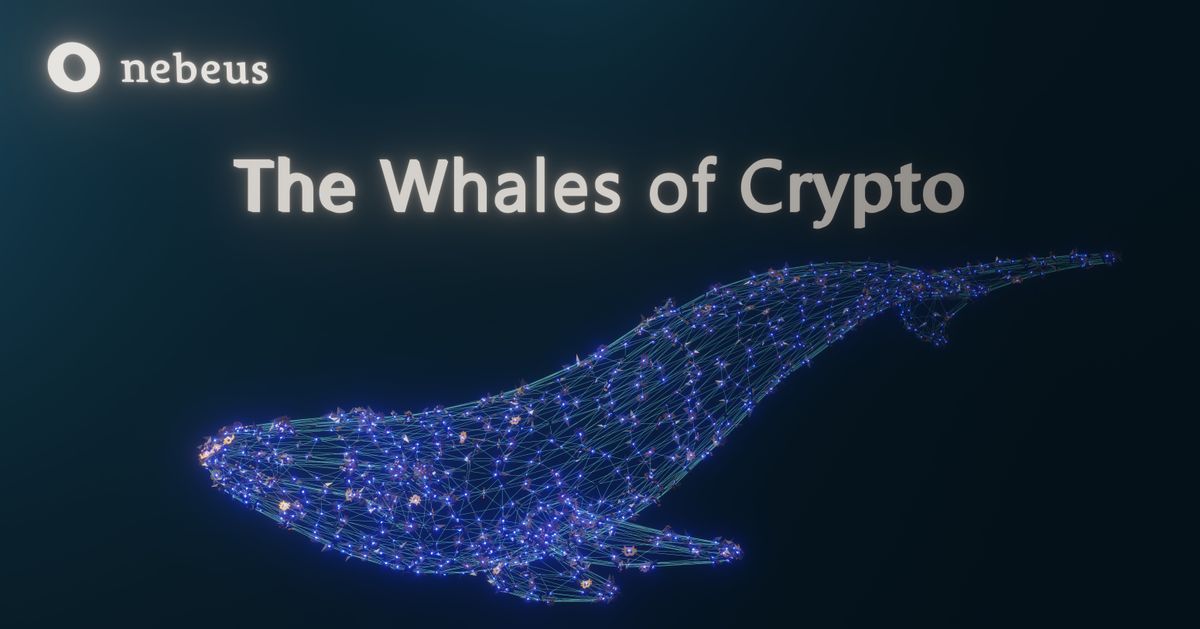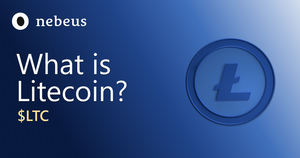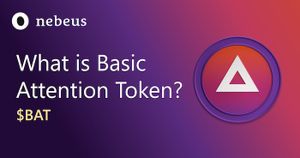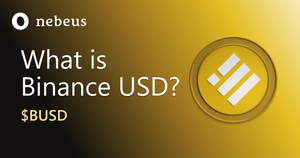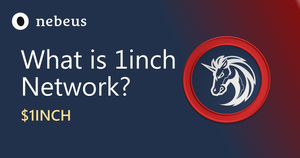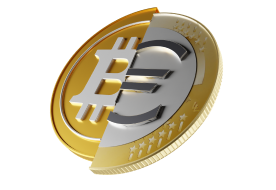“Polygon believes in Web3 for all.”
– Polygon
Note: This is the latest part of Nebeus’ Coin Analysis series, the place to discover the latest crypto coin news.
What is Polygon ($MATIC) and how does it work?
Polygon, formerly the Matic Network, is a scaling solution for blockchain technologies that offers a variety of tools to speed up and simplify transactions.
It also makes it possible to create decentralised applications (dApps) that are not only simple to use but are highly adaptable and have scalability as a primary feature. Polygon achieves all this while continuing to sustain its highly secure network.
What is Polygon and the MATIC Network?
On Ethereum, the platform upon which Polygon's infrastructure is built, a wide variety of decentralised applications are already available, making it the go-to spot for blockchain developers.
These dApps have a diverse number of use-cases, including ones for metaverse-related virtual worlds, video gaming, and the purchase of works of art.
However, as there was so much developer and user activity on Ethereum's blockchain every day, many started to complain that it was nearly unusable. Not only was there colossal network congestion, resulting in slow speeds, but costs associated with using the network had skyrocketed, placing its usage far outside the accessibility range for many blockchain enthusiasts.
What is the purpose of Polygon network?
Here is where the Polygon blockchain comes to the rescue. The Polygon blockchain describes its solution as an additional layer to Ethereum's blockchain. Most importantly, though, is it doesn't try to change the original layer.
To utilise it, you will initially be required to connect some of your cryptocurrency holdings to Polygon.
After that, you can communicate with a wide variety of popular cryptocurrency applications that were previously only accessible via the main Ethereum blockchain and the Ethereum virtual machine.
Now, although the Polygon ecosystem can be utilised in a massive number of different ways, its primary use-case involves it working as a dedicated structure upon which additional networks can be built on Ethereum.
This leads to interconnected networks while still harnessing the mighty power of the Ethereum virtual machine and blockchain technology.
It is Polygon's hope and mission that assisting Ethereum in its more sustainable expansion in any areas developers and users can dream of will result in even further creation of new and innovative dApps and products by the Ethereum community.
How Does Polygon work?
Innovative scaling solutions, including Polygon's Proof of Stake (PoS) chain, require the presence of a similar operator role on the network akin to miners on Ethereum to process transactions.
As part of a proof-of-stake mechanism, the Polygon blockchain network participants agree not to trade or sell their tokens.
To participate in the validation process, a user must first stake MATIC tokens using staking contracts hosted on the Ethereum mainnet.
What is polygon crypto and how is it different from the ethereum network?
There are, however, a few key distinctions to make. For instance, in addition to processing and authorising transactions in ways similar to Ethereum's miners, operators are in control of users entering and leaving the Polygon chains. This contrasts with a miner, who only processes and authorises transactions.
The Polygon ecosystem ensures the network's safety by using a group of validators, who are also their operators.
On the Ethereum mainnet, validators are responsible for running full nodes, producing blocks, validating transactions, and taking part in consensus and commit checkpoints.
At each checkpoint, rewards are given out to all stakers in proportion to the amount they have staked, except for the original proposer, who receives an additional bonus.
Validators stake their MATIC token as collateral to work for the security of the network and, in exchange for their service, earn rewards. This helps to ensure that the network's security is maintained at all times.
Is Polyon a good scaling solution?
Overall, Polygon intends to expand Ethereum's capacity by using the main platformas a scaling solution that is both efficient and cost-effective.
This will be accomplished with the assistance of a large number of sidechains.
What are sidechains?
Parent blockchain networks, also known as a mainnet, are blockchain newtorks to which a sidechain connects via a two-way peg. In contrast, a sidechain is an entirely different blockchain that links to this parent blockchain through a two-way peg.
Concerning Decentralised Finance (DeFi) protocols, the Ethereum network has several sidechains that can be used alongside the main Ethereum blockchain.
Once linked to the main chain, sidechains created with the Polygon SDK can be used to run Ethereum-compatible decentralised applications, helping connect them to the main chain without adding to mainnet congestion.
How many projects are supported on Polygon?
Polygon's performance-enhancing capabilities have benefited more than 19,000 dApps so far. This number is set to rise as awareness and adoption of Polygon and its benefits grow.
What is the Green Blockchain Summit?
Setting aside $20 million for climate projects and appointing a sustainability lead has helped Polygon make significant progress toward its goal of becoming carbon neutral in 2022.
Up to this point, it has mainly been a solo effort by Polygon in the blockchain world. As part of its roadmap, the eco-conscious company is enlisting the help of the rest of the Web3 community to maintain the excellent work the company has started.
This led to the Green Blockchain Summit, hosted by Polygon, which brought together Web3 leaders in July to discuss the most pressing environmental issues currently confronting the blockchain sector.
Aside from tackling the NFT issue and examining the use of on-chain carbon credits, the conference also tackled climate narratives and other industries' initiatives and what the blockchain industry can learn from them.
Who is the Founder of $MATIC token?
“Bringing the world to Ethereum”
- Polygon
Polygon was first known as the Matic Network when it was founded in India in 2017. It was conceived by Jaynti Kanani, Sandeep Nailwal, Anurag Arjun, and Mihailo Bjelic. The Matic Network was renamed Polygon in February 2021.
Tokens worth $5.6 million in ETH were sold by Polygon as part of its April 2019 initial offering.
Many of the biggest names in the DeFi industry, such as MakerDAO and Decentraland, have joined the Matic Network.

What is the $MATIC Token?
Polygon's rebranding included retaining the MATIC token cryptocurrency, the digital currency that underpins the entire network.
The Polygon network is overseen and protected by MATIC, which also collects network transaction fees, and handles payments and other settlements across the network.
Plus, as an Ethereum-based digital currency, MATIC can be used with other ERC-20 tokens.
The company states that there will never be more than 10 billion MATIC tokens in circulation, which is consistent with the process underlying the majority of other cryptocurrencies.
The Polygon network's native cryptocurrency also has a hand in development purposes.
For instance, users can earn MATIC tokens by making their computing resources and services available to the Polygon network for other users to utilise through transaction processing or running smart contracts.
Additionally, there are governance proposals whereby those who own MATIC can vote on network upgrades based on their stake in the company.
How to buy Polygon? $MATIC
MATIC can be purchased on a wide variety of cryptocurrency exchanges and platforms such as Nebeus.
You should only invest money that you can afford to lose, and you should conduct your own research before making any investments.
What makes $MATIC different? Benefits of Polygon
Several advantages are readily apparent, such as the following:
Polygon is bringing together the highly divided world of blockchain
It creates a channel through which Ethereum can communicate with other blockchain networks, encouraging other blockchain networks already in use to become compatible with Ethereum.
This promotes the notion of interoperability, a big talking point in the blockchain world.
Polygon makes dApp building efficient and effective
Polygon supporters know that one of the network's key benefits is its dedication to assisting Ethereum in scaling. As such, developers can use Polygon's technology to make it simpler to use and build dApps on the network's blockchain.
There are countless examples of successful dApps harnessing the power of Polygon as the foundation for their platform. This includes:
- Sushi, which is a decentralised exchange
- Augur, which is a prediction market platform
- and Ocean Protocol, which is a platform that enables individuals and businesses to trade data and make money off of data-based services.
It’s branching into Decentralised Gaming and NFTs
Not long ago, in 2021, Polygon launched Polygon Studios, a division of the company dedicated to developing blockchain games and NFTs. Plus, in very early 2022, a new CEO was appointed for Polygon, Ryan Watts. Watts was hired after being at YouTube, where he was in charge of the gaming department.
Polygon could become an industry leader in the provision of technology for decentralised gaming and NFTs if its Polygon Studios venture is successful.
Low fees compared to the ethereum blockchain
Transaction fees are maintained at a level that is consistently low. A typical transaction fee is approximately $0.01.
Nearly instantaneous transactions
Polygon can keep its transaction processing speeds at a high level because it uses a consensus mechanism that can finalise the process of transaction confirmation within the confines of a single block.
The processing of a block at Polygon typically takes about 2.1 seconds on average.
How many Polygon ($MATIC) coins are there?
Max Supply: 10,000,000,000
Circulating Supply (29/07/2022): 8,006,803,952
Currently, approximately 80.1% of the total supply is already in circulation.
Note: We gather our information from CoinGecko. The numbers written are correct at the time of writing.
What is the Current Price and current Market Cap of Polygon? (29/07/2022)?
Current Price: $0.958596
Current Market Cap: $7,675,288,113
Current Market Cap Position: #12
All-Time Low: $0.00314376 on May 10th, 2019
All-Time High: $2.92 on December 27th, 2021
Note: We gather our information from CoinGecko. The numbers written are correct at the time of writing.
FAQ
What does the Polygon software development kit do?
Polygon (formerly known as Matic Network) is a Layer 2 scaling solution for Ethereum, aimed at improving the speed and reducing the cost of transactions on the Ethereum blockchain.
It provides developers with a platform to create decentralized applications (dApps) that are scalable, efficient, and interoperable.
Additionally, it provides an infrastructure for building Ethereum-compatible blockchains, known as sidechains, to further reduce network congestion.
Polygon's native token, MATIC, is used for paying transaction fees, staking in the consensus mechanism, and participating in the network's governance.
Is Polygon crypto a good investment?
Whether Polygon (MATIC) is a good investment depends on various factors such as your risk tolerance, investment goals, and understanding of the crypto market.
Polygon has shown significant growth and has been adopted by many projects due to its scalability solutions for Ethereum.
However, investing in cryptocurrencies is risky, and it's essential to conduct thorough research or consult with a financial advisor before making investment decisions.
Is Polygon better than Ethereum?
It's not quite accurate to compare Polygon directly with Ethereum as they serve different purposes and can coexist rather than compete.
Ethereum is a decentralized, open-source blockchain featuring smart contract functionality, and it's the base upon which Polygon operates.
On the other hand, Polygon is a Layer 2 scaling solution designed to improve Ethereum's performance by enabling faster and cheaper transactions.
In essence, Polygon's purpose is not to be "better" than Ethereum but to enhance the Ethereum network's capabilities.
Conclusion
Ready to get involved with Polygon? Become part of its vibrant and growing community by joining one of its channels:
- Polygon - Twitter
- Polygon - Discord
- Polygon - Telegram
- Polygon - Reddit
- Polygon - Youtube
- Polygon - Website
- Polygon - Github
You can sign up for a Nebeus account to buy, hold, exchange, and stake your Polygon investment.
La inversión en criptoactivos no está regulada, puede no ser adecuada para inversores minoristas y se puede perder la totalidad del monto invertido.





